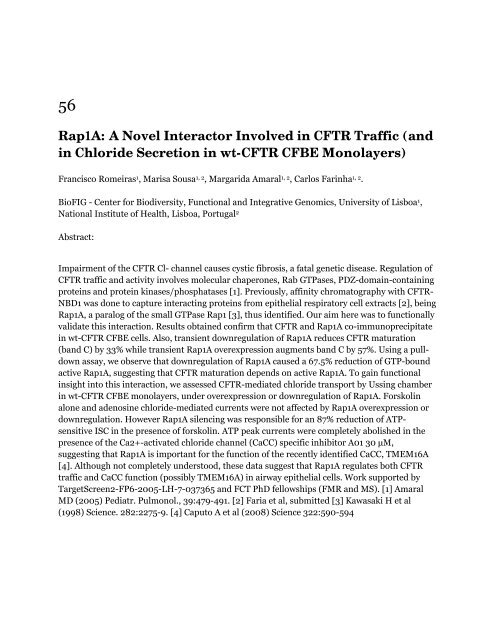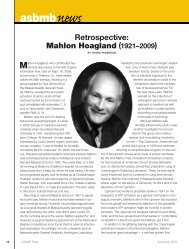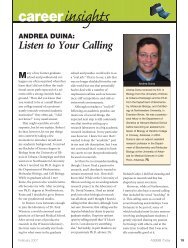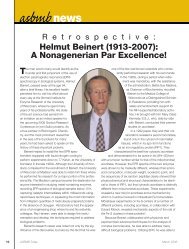View Program - asbmb
View Program - asbmb
View Program - asbmb
- TAGS
- program
- asbmb
- www.asbmb.org
You also want an ePaper? Increase the reach of your titles
YUMPU automatically turns print PDFs into web optimized ePapers that Google loves.
56<br />
Rap1A: A Novel Interactor Involved in CFTR Traffic (and<br />
in Chloride Secretion in wt-CFTR CFBE Monolayers)<br />
Francisco Romeiras 1 , Marisa Sousa 1, 2 , Margarida Amaral 1, 2 , Carlos Farinha 1, 2 .<br />
BioFIG - Center for Biodiversity, Functional and Integrative Genomics, University of Lisboa 1 ,<br />
National Institute of Health, Lisboa, Portugal 2<br />
Abstract:<br />
Impairment of the CFTR Cl- channel causes cystic fibrosis, a fatal genetic disease. Regulation of<br />
CFTR traffic and activity involves molecular chaperones, Rab GTPases, PDZ-domain-containing<br />
proteins and protein kinases/phosphatases [1]. Previously, affinity chromatography with CFTR-<br />
NBD1 was done to capture interacting proteins from epithelial respiratory cell extracts [2], being<br />
Rap1A, a paralog of the small GTPase Rap1 [3], thus identified. Our aim here was to functionally<br />
validate this interaction. Results obtained confirm that CFTR and Rap1A co-immunoprecipitate<br />
in wt-CFTR CFBE cells. Also, transient downregulation of Rap1A reduces CFTR maturation<br />
(band C) by 33% while transient Rap1A overexpression augments band C by 57%. Using a pulldown<br />
assay, we observe that downregulation of Rap1A caused a 67.5% reduction of GTP-bound<br />
active Rap1A, suggesting that CFTR maturation depends on active Rap1A. To gain functional<br />
insight into this interaction, we assessed CFTR-mediated chloride transport by Ussing chamber<br />
in wt-CFTR CFBE monolayers, under overexpression or downregulation of Rap1A. Forskolin<br />
alone and adenosine chloride-mediated currents were not affected by Rap1A overexpression or<br />
downregulation. However Rap1A silencing was responsible for an 87% reduction of ATPsensitive<br />
ISC in the presence of forskolin. ATP peak currents were completely abolished in the<br />
presence of the Ca2+-activated chloride channel (CaCC) specific inhibitor A01 30 μM,<br />
suggesting that Rap1A is important for the function of the recently identified CaCC, TMEM16A<br />
[4]. Although not completely understood, these data suggest that Rap1A regulates both CFTR<br />
traffic and CaCC function (possibly TMEM16A) in airway epithelial cells. Work supported by<br />
TargetScreen2-FP6-2005-LH-7-037365 and FCT PhD fellowships (FMR and MS). [1] Amaral<br />
MD (2005) Pediatr. Pulmonol., 39:479-491. [2] Faria et al, submitted [3] Kawasaki H et al<br />
(1998) Science. 282:2275-9. [4] Caputo A et al (2008) Science 322:590-594






